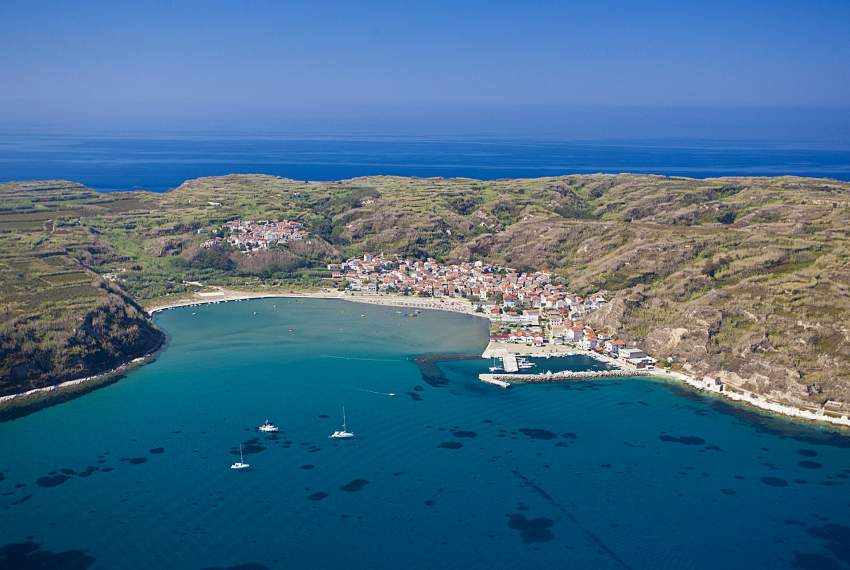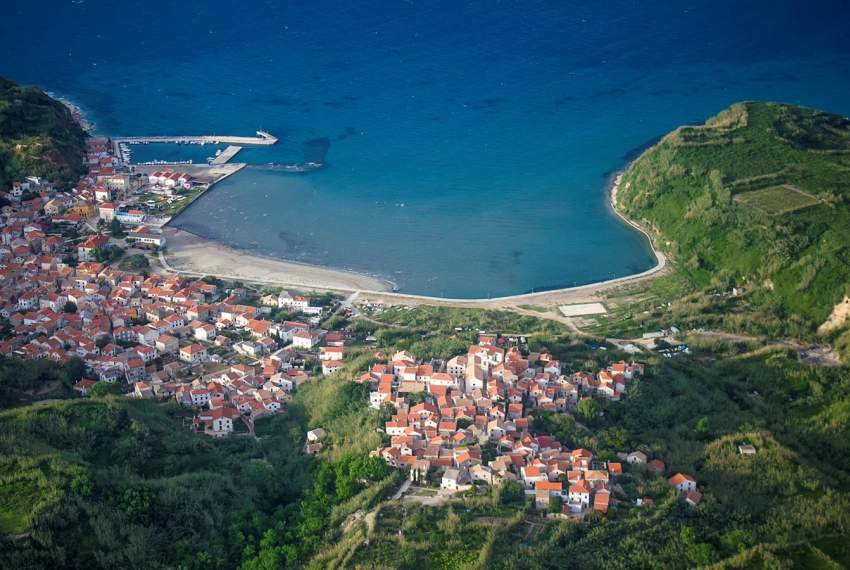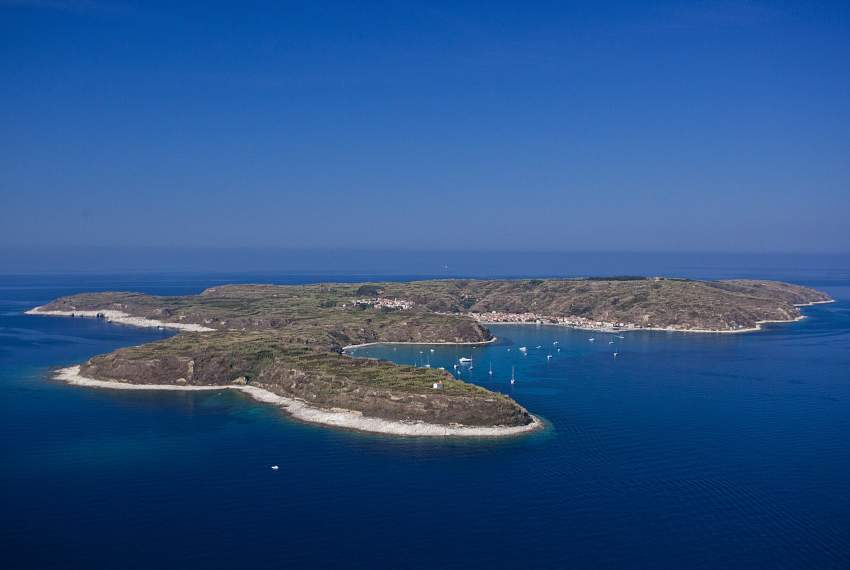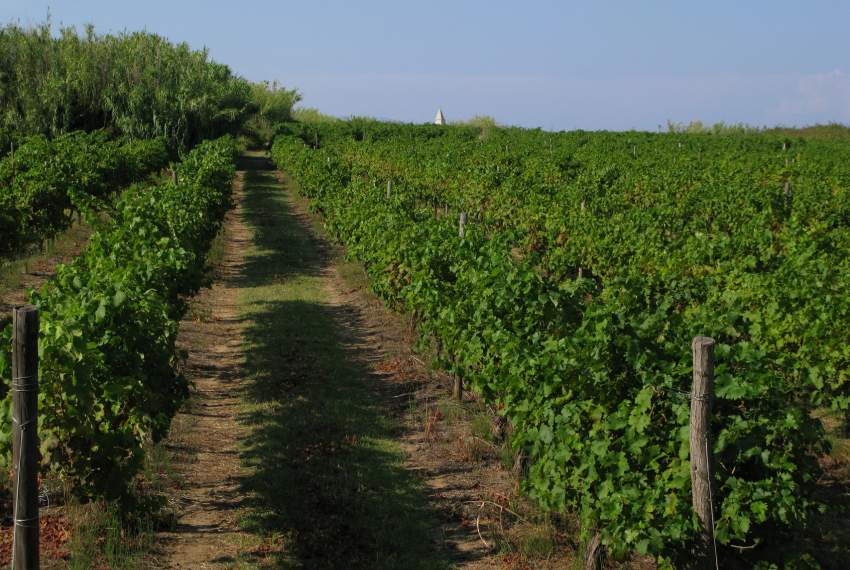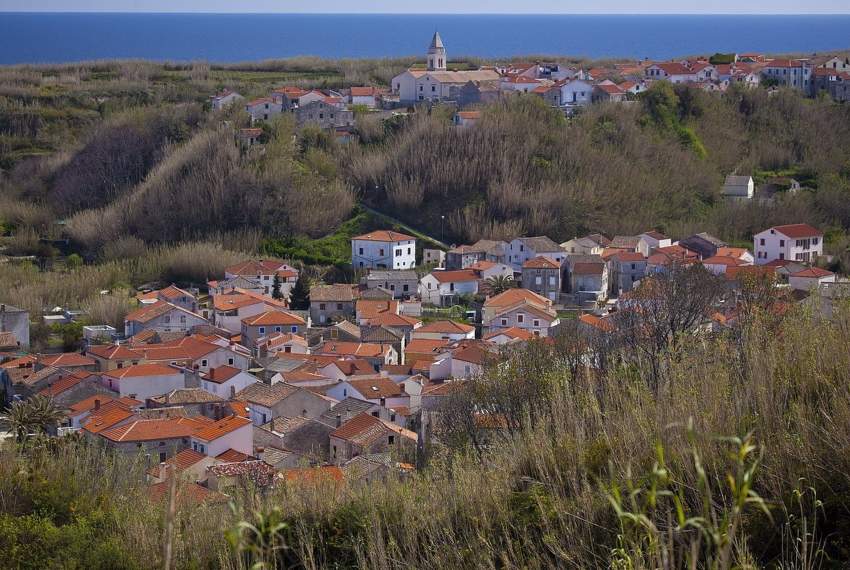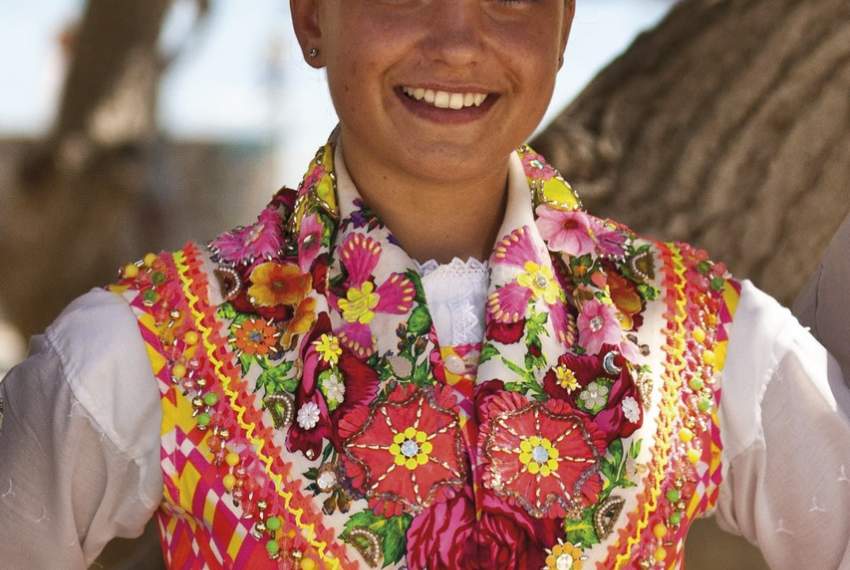- 26.02.2022
Island Susak
Susak is a unique island in the Adriatic Sea, both by its genesis and appearance. The ancient winds deposited thick layers of fine yellowish sand onto the limestone plate and since time immemorial people planted reeds around their fields. The roots of the reeds, in search for water, penetrate deep into the soil and preserve it from erosion. The island occurred very early on the nautical charts, first under the Roman name Sansacus or Sansegus, which probably derives from "sampsychon" (Greek - marjoram), which resulted in the Croatian name of Susak.
First mention of the island in written sources dates back to the middle of the 9th century, when the Saracen and Venetian armies clashed in the waters near the island.The largest population of Susak was recorded after the 2nd World War. In the sixties of the last century, mass emigration to the USA depleted the population. It is estimated that today in America there are 2,500 Susakers, mainly in the state of New Jersey. From 1985 onwards, «Emigration Day» is celebrated on Susak the last day of July.The first settlement, whose beginnings date back to Roman times, was built on the fertile plateau and is called Gornje selo (“the upper village”), while Donje selo (“the lower village”) is located in the harbour and was built at a later date, during the largest boom of the grape growing in the late 19th century. Because of its isolation, Susak has preserved its archaic speech (protected as a part of the cultural heritage) and the specific customs and colourful costumes.
COSTUMES
Customs of a female traditional dress on the island of Susak are very well preserved, with several different variants associated with specific age and certain occasions. Older variant of the Susak costumes, so called “by Susak“ style (po susacku) is characterized by white linen shirt (kosula) closed around the neck, waistcoat (bust) which tightens and accentuates the waist, and bravaruol (scarf) that descends down the chest to the waist. From the waist down the body is covered by kamizot crni (black) or lasćavi (shiny), a short skirt richly frilled and composed of as many as 7 woven halves (pola) of the fabric sewn along the edges, and then puckered into wider or narrower folds made of finished cotton material.The lower kamizot is made of the same cut as the upper one, only white in colour.
The bottom skirt is called sukna skarlata and it is of much narrower cut, red in colour and richly adorned with lace and colourful ribbons. During the dance, the two topmost kamizot are elevated and sukna skarlata comes to the fore. The underpants (mudande) are decorated with lace. The feet are covered by knitted woollen kalcete (sometimes red) and parti-coloured socks or slippers (carape, papuce or pute) made of cloth. The style of combing is also unique. The hair is parted in two identical sections while two frontal twisted strands (rici) are left hanging by the face. The rest of the hair is flatly braided onto the head in form of a cake, so called kokum, while square patterned scarf (facuol), usually red or in darker colours, is set over the head. Slightly modified and denuded variant of costumes po susacku, can still be seen on a few elderly ladies on the island.Another, newer variant is called “by Lošinj“style (po losinsku), and as the name itself suggests, it was influenced by the Lošinj fashion from the late 18th century.
This style was practiced by young girls during the festive occasions and in the most luxurious form it has been preserved in a wedding equipment of a bride. It consists of a pink silken blouse (zabajka), richly decorated with colourful ribbons, lace, metallic threads and glass balls on the chest, upper back and sleeves. Kamizot na faldice is also pink, with apron (tarvijerslica) made of pink silk with wide borders decorated in the same way as the bust/sleeves of zabajka worn over it. Underneath, three underskirts, very starched (inkolane) and reinforced with a wide wheel in the lower part, are worn. Sukna rakamana is present as well, and it is also of narrower cut and more richly decorated than in the po susacku style. Mudande with lace are present again as the undermost layer of clothing. Feet are covered by pink kalcete and leather shoes (postoli).
Brides are wearing wedding crown, jirlanda or vijel, on their heads. Last wedding in the traditional zabajka on Susak was recorded in 1980's! Although Susak costumes are well known for exceptionally short skirts - miniskirts, the fact is that the costumes shortened during the 20’s of the 20th century under the influence of bourgeois fashion. Until then, the female kamizot reached until to the middle of the calf.
ECONOMY
By the mid 18th century Susak was characterised by mixed economy: crop growing (wheat, barley, beans, etc.) was in the first place, then wine growing accompanied by sheep-breeding and fishing. During this type of economy the economic development of Susak was faster than the development of Veli and Mali Lošinj, so in the 1650 the amount of the church tithe paid by Susak was 400 Venetian liras (as much as Unije), while Lošinj had to pay only 320 liras. Of the former intensive crop growing testify the size of a common threshing floor for threshing wheat (flail threshing), which was located at the site of today's large tank in Gornje selo.
Later, in the late 18th and in the 19th centuries, parallel with the economic success of Lošinj, Susak achieved wine growing and fishing specialization, while crop growing and sheep-breeding disappeared. Olive cultivation has never been spread due to unsuitable soil.Agriculture of Susak is specific for several reasons: there is no cattle (oxen, donkeys) on the island, there are no carts and ploughs, all chores are carried out by hand and hand tools, all transportation of goods on the island is done by people themselves (the men on their backs, the women on their heads).
Basic tool is a square, short-handled hoe for soil and reed hoeing, and for the maintenance of reed terraces, roads and gorges (narrow passages cut into a sand). During the late 18th century all activities focused on the production of wine and fishing, while everything else necessary for living had to be imported. Each resident of Susak was entirely an individual businessman, and at the same time each person was a wine-grower, fisherman, sailor, wholesale and retail salesman and buyer. Produced grapes, wine and salted fish were independently transported by sailboat with oars (the first motor boat appeared on Susak in 1929) to Cres, Lošinj, and Istra as the nearest mainland, where they were sold or exchanged (baratati) for other goods.
So, the quintal of grapes (100 kg) was worth 6 kg of sheep cheese, and 10 litres of olive oil were worth 4 quintals of wood or 5 kg of wool.Until the mid 19th century feudalism was effective on the island because Susak was, like the neighbouring islands of Unije and Ilovik, feud of Osor and later Krk diocese. The residents of Susak were therefore obliged to pay to the Osor diocese one third (fourth in the 19th century) of all yield like must, wheat, beans, etc.; they had to pay harvest tithes (intrada) for a local church, head tax (the tax that is paid by the heads of families) and fish twentieth paid by all owners of trawl-nets.
All this represented a considerable burden for the poor island (every third or fourth day the residents of Susak worked for the bishop!), so it’s no surprise that the church tax gatherers were extremely hated by the people. Particularly hated was one church officer, the bishop's brother, blind in one eye, mentioned in the prayers of the residents of Susak:''From the black death, famine and war and bishop’s blind brotherfree us, oh Lord!“The island is connected by a regular daily shipping line with Mali Lošinj and by catamaran with Rijeka.
